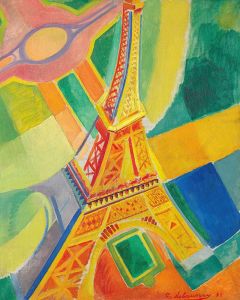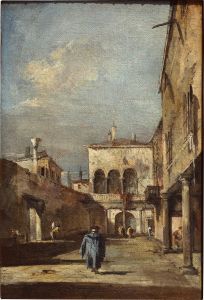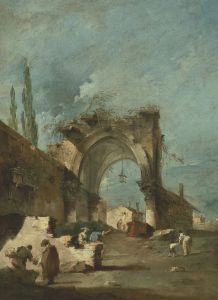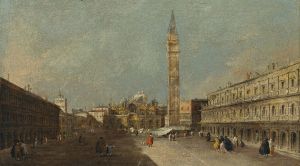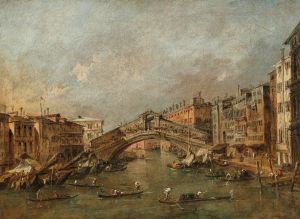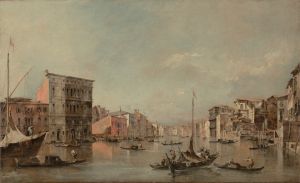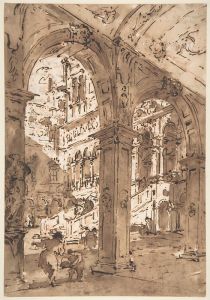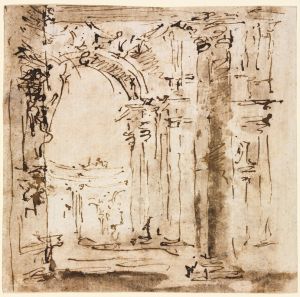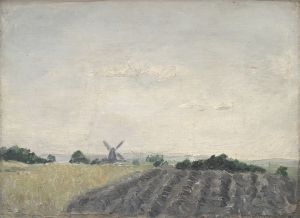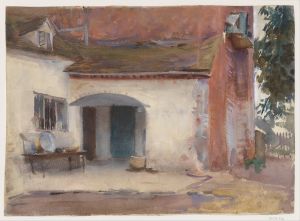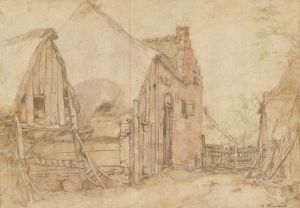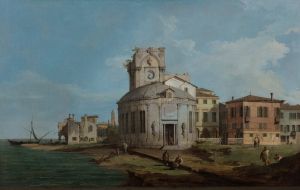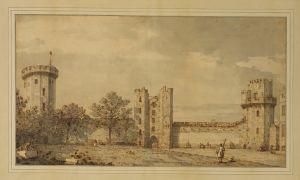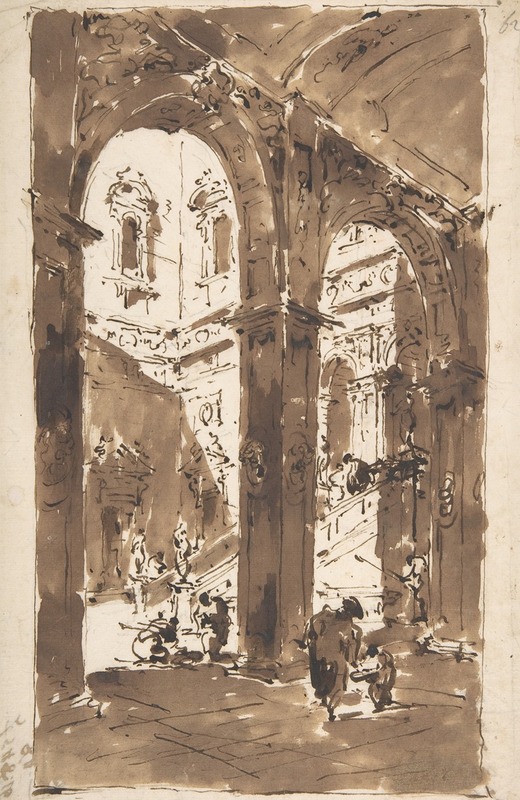
Architectural Capriccio; Courtyard of a Palace
A hand-painted replica of Francesco Guardi’s masterpiece Architectural Capriccio; Courtyard of a Palace, meticulously crafted by professional artists to capture the true essence of the original. Each piece is created with museum-quality canvas and rare mineral pigments, carefully painted by experienced artists with delicate brushstrokes and rich, layered colors to perfectly recreate the texture of the original artwork. Unlike machine-printed reproductions, this hand-painted version brings the painting to life, infused with the artist’s emotions and skill in every stroke. Whether for personal collection or home decoration, it instantly elevates the artistic atmosphere of any space.
Francesco Guardi, an 18th-century Venetian painter, is renowned for his contributions to the tradition of Venetian vedute (view paintings) and capricci (architectural fantasies). One of his notable works, Architectural Capriccio; Courtyard of a Palace, exemplifies his skill in creating imaginative architectural compositions that blend reality and fantasy. This painting, like many of Guardi's capricci, does not depict a specific, real-world location but instead combines architectural elements to create an idealized and atmospheric scene.
The artwork portrays an elaborate courtyard, framed by grandiose classical architecture. The structures in the painting feature columns, arches, and decorative details that evoke the grandeur of Renaissance and Baroque design. Guardi's use of light and shadow enhances the depth and drama of the scene, while his loose, expressive brushwork lends the composition a sense of movement and vitality. The figures scattered throughout the courtyard are rendered in a sketch-like manner, serving to animate the space without detracting from the architectural focus.
Guardi's capricci were influenced by the works of earlier Venetian artists, such as Marco Ricci and Canaletto, but his approach is distinct. While Canaletto's architectural paintings are known for their precision and clarity, Guardi's works often emphasize mood and atmosphere, with a more painterly and impressionistic style. This stylistic difference is evident in Architectural Capriccio; Courtyard of a Palace, where the interplay of light, shadow, and texture creates a dreamlike quality.
The exact date of this painting is not definitively known, but it is generally attributed to the later period of Guardi's career, when he focused increasingly on capricci and imaginary scenes. During this time, Guardi's work was highly sought after by collectors, particularly those interested in the romanticized vision of Venice and its surroundings.
Today, Architectural Capriccio; Courtyard of a Palace is appreciated as a testament to Guardi's artistic imagination and technical skill. It reflects the 18th-century fascination with the picturesque and the fantastical, as well as the enduring appeal of Venice's architectural heritage. The painting is housed in a public or private collection, though specific details about its current location or provenance may vary depending on the source.





